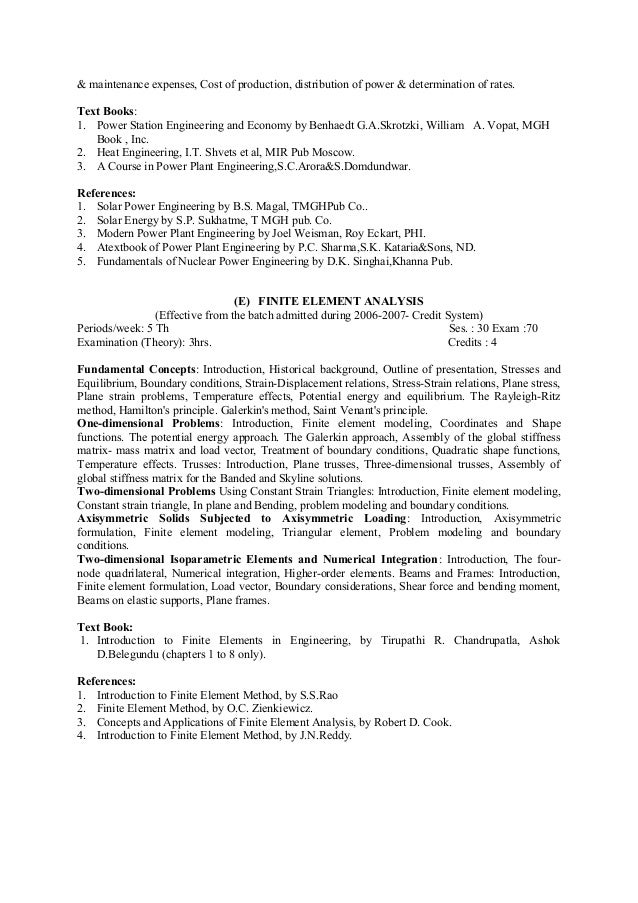Solar Energy By S P Sukhatme Pdf Editor

The optical performance of solar central tower (CT) systems on hillsides of mountain areas is investigated based on the biomimetic spiral heliostat field distribution algorithm. The optical efficiencies and the field characteristics of different hillside solar field configurations are examined. The effect of various geometric parameters such as hillside tilt angle and the location of the receiver on the optical efficiency of the field are investigated and documented. The study is based on generating a 25 MW th power plant at the location of Sierra Sun Tower in California, USA, using Planta Solar 10 (PS10) heliostats' parameters. This study is performed numerically using a specially developed code using matlab software. The biomimetic spiral distribution pattern and the particle swarm optimization (PSO) method were used to obtain optimum solar fields.
Nasr Eldin, “ An experimental investigation of the factors which affect on the performance of a single basin typical double slope solar still for water desalination,” Energy Power Eng. 7, 270– 277 (2015).
The spiral distribution shape factors were optimized for pursuing maximum annual weighted field efficiency. It is found that the annual optical weighted field efficiency for hillside solar fields is always lower than that for a flat field for same receiver height. On the other hand, the field land area for small hillside-slopes is smaller than that of a flat field area. It is found that there is an optimum field tilt angle where the land area is minimum. The minimum field area for the system studied in this paper was associated with (15 deg) field tilt angle. Furthermore, it was found that as the tower height increases the annual optical field weighted efficiency increases until it reaches a peak value. It was also found that, the closer the tower to the beginning of the heliostat field, the higher the field efficiency with less number of heliostats and less land area.

Copyright in the material you requested is held by the American Society of Mechanical Engineers (unless otherwise noted). This email ability is provided as a courtesy, and by using it you agree that you are requesting the material solely for personal, non-commercial use, and that it is subject to the American Society of Mechanical Engineers' Terms of Use. The information provided in order to email this topic will not be used to send unsolicited email, nor will it be furnished to third parties. Please refer to the American Society of Mechanical Engineers' Privacy Policy for further information.
Linked References • “Horace de Saussure U.S. Department of Energy—Energy Efficiency and Renewable Energy,” “The History of Solar”,. Lampert, “Advanced optical materials for energy efficiency and solar conversion,” Solar and Wind Technology, vol. 347–379, 1987. Kaushika and M. Arulanantham, “Transmittance-absorptance product of solar glazing with transparent insulation materials,” Solar Energy Materials and Solar Cells, vol. 383–395, 1996.
Rose et al., “Glazing with very high solar transmittance,” Solar Energy, vol. 177–188, 1998. Maatouk, “Non-gray radiative and conductive heat transfer in single and double glazing solar collector glass covers,” International Journal of Thermal Sciences, vol. 579–585, 2006. Khoukhi and S.
• Insert an AutoCAD DWG file as an associative DWG: • In a part file: • Manage tab Insert panel Import • 3D Model tab Create panel Import • In an assembly file: • Assemble tab Component panel Place • In the Place Component dialog box, select a DWG file and click Open. Torgovo razvlekateljnij centr dwg.
Maruyama, “Theoretical approach of a flat-plate solar collector taking into account the absorption and emission within glass cover layer,” Solar Energy, vol. 787–794, 2006. NChanniwala, Distribution of Heat Losses in a Single Glazed Flat Plate Collector at Variable Wind velocity -An Experimental Simulation, vol. 5, World Academy of Science, Engineering and Technology, 2011. Akhtar and S. Mullick, “Effect of absorption of solar radiation in glass-cover(s) on heat transfer coefficients in upward heat flow in single and double glazed flat-plate collectors,” International Journal of Heat and Mass Transfer, vol. 125–132, 2012.